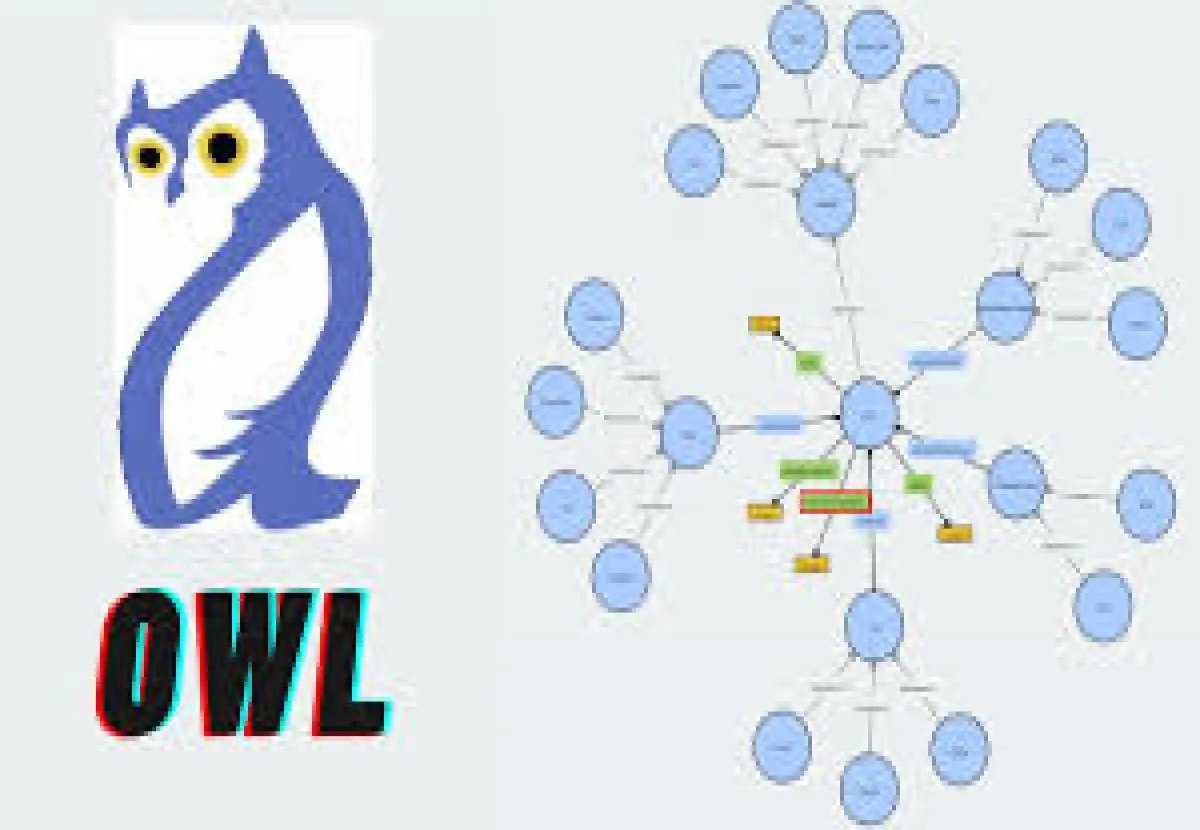Backend Dan Frontend Dari Implementasi Ontologi
Di bawah ini aku kasih versi backend dan frontend dari implementasi ontologi yang sama (library.owl) menggunakan tiga pendekatan:
1. React JS (Frontend) – Konsumsi SPARQL Endpoint
Tujuan: Fetch data dari Fuseki (
localhost:3030/library/query) dan tampilkan daftar buku.
File: App.js
import React, { useEffect, useState } from 'react';
function App() {
const [books, setBooks] = useState([]);
useEffect(() => {
const query = `
PREFIX lib: <http://www.semanticweb.org/ontologies/library#>
SELECT ?title ?author WHERE {
?book a lib:Book .
?book lib:title ?title .
?book lib:hasAuthor ?auth .
?auth lib:name ?author .
}
`;
fetch("http://localhost:3030/library/query", {
method: "POST",
headers: {
"Content-Type": "application/sparql-query",
"Accept": "application/sparql-results+json"
},
body: query
})
.then(res => res.json())
.then(data => {
const results = data.results.bindings.map(b => ({
title: b.title.value,
author: b.author.value
}));
setBooks(results);
});
}, []);
return (
<div style={{ padding: 20 }}>
<h1>???? Buku dan Penulis (React)</h1>
<table border="1" cellPadding="10">
<thead>
<tr>
<th>Judul</th>
<th>Penulis</th>
</tr>
</thead>
<tbody>
{books.map((b, i) => (
<tr key={i}>
<td>{b.title}</td>
<td>{b.author}</td>
</tr>
))}
</tbody>
</table>
</div>
);
}
export default App;2. PHP Backend (with CURL)
Tujuan: Query data dari ontologi dan tampilkan dalam halaman PHP.
File: index.php
<?php
$endpoint = "http://localhost:3030/library/query";
$query = <<<SPARQL
PREFIX lib: <http://www.semanticweb.org/ontologies/library#>
SELECT ?title ?author WHERE {
?book a lib:Book .
?book lib:title ?title .
?book lib:hasAuthor ?auth .
?auth lib:name ?author .
}
SPARQL;
$ch = curl_init($endpoint);
curl_setopt($ch, CURLOPT_POST, true);
curl_setopt($ch, CURLOPT_HTTPHEADER, [
"Content-Type: application/sparql-query",
"Accept: application/sparql-results+json"
]);
curl_setopt($ch, CURLOPT_POSTFIELDS, $query);
curl_setopt($ch, CURLOPT_RETURNTRANSFER, true);
$response = curl_exec($ch);
curl_close($ch);
$data = json_decode($response, true);
?>
<!DOCTYPE html>
<html>
<head><title>Perpustakaan</title></head>
<body>
<h1>???? Data Buku dan Penulis (PHP)</h1>
<table border="1" cellpadding="10">
<tr><th>Judul</th><th>Penulis</th></tr>
<?php foreach ($data['results']['bindings'] as $row): ?>
<tr>
<td><?= $row['title']['value'] ?></td>
<td><?= $row['author']['value'] ?></td>
</tr>
<?php endforeach; ?>
</table>
</body>
</html>3. Python (Flask API)
Tujuan: Buat API REST yang ambil data dari Fuseki, lalu frontend (apa saja) bisa konsumsi.
File: app.py
from flask import Flask, jsonify
import requests
app = Flask(__name__)
@app.route("/api/books")
def get_books():
query = """
PREFIX lib: <http://www.semanticweb.org/ontologies/library#>
SELECT ?title ?author WHERE {
?book a lib:Book .
?book lib:title ?title .
?book lib:hasAuthor ?auth .
?auth lib:name ?author .
}
"""
headers = {
"Content-Type": "application/sparql-query",
"Accept": "application/sparql-results+json"
}
response = requests.post("http://localhost:3030/library/query", data=query, headers=headers)
results = response.json()['results']['bindings']
books = [{"title": r['title']['value'], "author": r['author']['value']} for r in results]
return jsonify(books)
if __name__ == "__main__":
app.run(debug=True)Next Steps
Kamu bisa gabungkan frontend React ke backend Flask atau PHP jika mau all-in-one app.
Untuk produksi, jangan lupa tambahkan CORS, validasi, dan pengamanan data.

















0 Comments